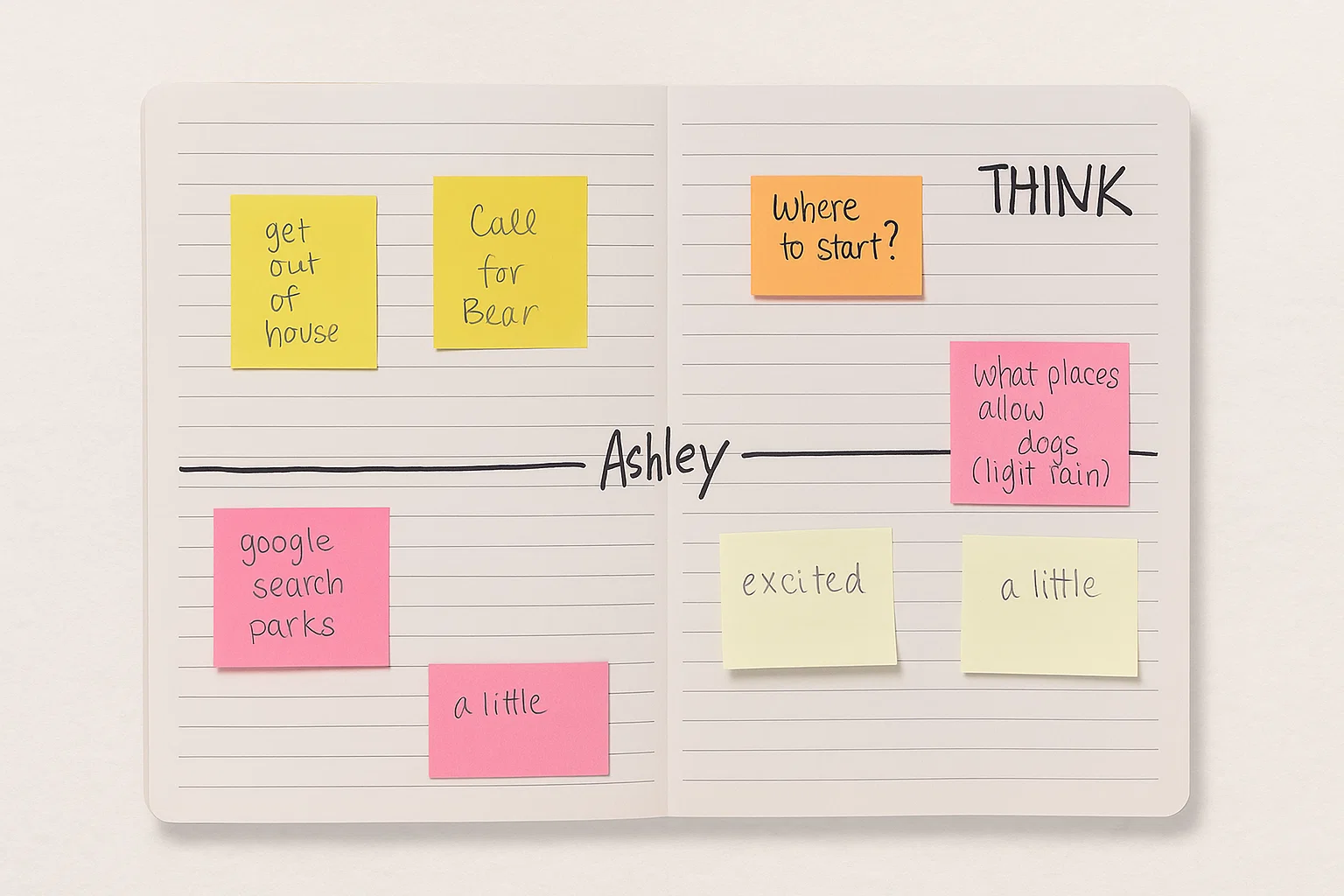© 2024 fjorge. All rights reserved.
fjorge Design Process: Journey Mapping

One of the last activities fjorge does during the Workshop as part of the Design Process is journey mapping. Using the user personas and empathy maps created previously, we focus on one persona to guide the creation of the journey map. This ensures the user is at the forefront of the design process.
What is a journey map?
A journey map is a step by step outline of the path a particular user would take when interacting with your product. Journey maps focus on a very particular moment in time. The shorter the timeline, the more detailed we can outline the user’s interactions. While a user’s journey with your product could be outlined over a year, often the most effective journey maps look at an interaction that could last a matter of minutes (better yet, seconds)!
The contents of a journey mapping can be dependent on the context, but it often includes:
- Overarching stages
- Timeline
- User steps
- Touchpoints
- Emotions
- Pain points (Opportunities of Intervention)
Why use a journey map?
A journey map really breaks down the process. We have a basic understanding of the user and being able to place them into the narrative of the journey gives a holistic view of a specific sequence of the process. One of the best benefits of breaking the process down bit by bit is being able to uncover pain points as we go. With each pain point, fjorge discovers an opportunity to make the system better.
Additionally, a journey map can result in a ‘user story’. User stories are used by developers and the quality assurance team to both build and validate the system is working properly. This is a vital tool to get every team member on the same page for the task at hand. Deriving a user story based on a journey map ensures the system is built to meet the needs of the user.
Example

In previous activities, we defined Ashley as our primary user for a new web app that will help her find dog parks in the area. Creating our persona allowed us to learn that Ashley lives in Chicago, owns a high-energy dog, and her job requires unusual hours. After creating an empathy map we understand that Ashley enjoys meeting new people at the dog parks, but struggles to figure out which park is open for dogs based on their hours. Hopefully, you now have a clearer understanding of the fjorge Design Process: journey mapping.
